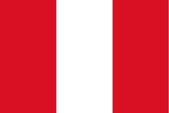

|
|
 The US Export-Import Bank (Ex-Im Bank) approved a pair of direct loans to two wind power projects in Peru for the acquisition of wind turbines. The financing of almost US$65 million in total for Marcona and the Tres Hermanas wind projects represents Ex-Im Bank’s first renewable-energy transactions in Peru. The projects have a combined generating capacity of129 megawatts
 In the past two years, dozens of public and private institutions have announced plans to divest fossil fuels from their portfolios, according to Bloomberg New Energy Finance (BNEF). One executive described the movement as “one of the fastest-moving debates I think I’ve seen in my 30 years in markets.” A BNEF White Paper explores the motivations behind fossil fuel divestment, the scale of existing fossil fuel investments, and potential alternatives for investment re-allocated from oil, gas, and coal stocks. 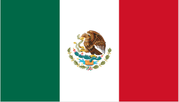 Effective August 12, 2014, Mexico's new electricity law opened the electric industry to private sector participation in generation, transmission, distribution and power marketing activities. The new law provides for mechanisms to encourage the use of clean energy sources, and generation companies that produce energy through renewable sources or clean technologies will be eligible to receive tradable clean energy certificates. Legal analyses are available here and here. Analysis by Bloomberg New Energy Finance shows that investment in clean energy in Mexico totalled $1.3 billion in the first half of 2014, compared to $1.6 billion in the whole of last year. If activity continues at the rate of the first six months, then 2014 will be a record year, overtaking the previous high of $2.4 billion set in 2010. Significant further increases in activity in both wind and solar are forecast in the next two years. 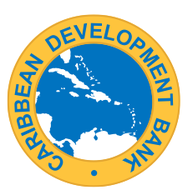 Caribbean nations are looking to attract as much as $30 billion of investment to expand the clean power sector and cut reliance on fossil fuels, according to the Caribbean Development Bank. “Most of our countries are highly dependent on fossil fuels for power generation,” Caribbean Development Bank president Warren Smith said in an interview to Bloomberg News in London. “This vulnerability to volatile oil prices has contributed hugely to the competitiveness challenges of Caribbean industries.” About $20 billion is needed in the next five to 10 years to replace power plants and upgrade distribution and transmission, he said. There is potential to replace 4,750MW of fossil-fuel generation with renewables through 2019, Smith said. The bank is talking with regional utilities interested in building clean energy plants to feed power into the grid. Smith also noted that the region is starting from a very low level of renewables deployment and needs policy support from governments if it is to realize this clean energy vision. For example, only two countries - Jamaica and Barbados - currently allow households and businesses generating their own power through technologies such as solar panels to sell it back to the grid, leading to a policy gap that acts as a barrier to wider investment. "The regulatory environment is a prerequisite for a major uptake of renewables," Smith says. "If you want to move to a situation where you can attract investment in renewable then you have to have the ability to sell to the grid. Right now, we are behind the eight-ball on that. But we are working with the countries to try to ensure that legislation is put in place." Sources for this post: Bloomberg New Energy Finance Week in Review; Business Green.  The Overseas Private Investment Corp. (OPIC) approved a loan guarantee of up to $230 million to support construction of Luz del Norte, a 141-megawatt solar plant in Chile, which is being built by Arizona-based First Solar. Since 2013, OPIC has approved $900 million in loan guarantees for six renewable energy projects in Chile, making the U.S. the largest lender for renewable energy in the country, according to The Hill.  In Brazil's most recent national power auction held on June 6, wind won 551MW, more than half of of the 968MW contracted. Bloomberg New Energy Finance (BNEF) projects 2.7GW of wind build-out in 2014, and 3.7GW in 2015. 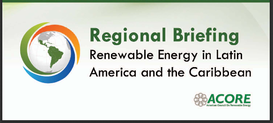 ACORE's white paper, “Renewable Energy in Latin America and the Caribbean,” analyzes issues and opportunities in the Latin American and the Caribbean (LAC) region's renewable energy markets. New sources of renewable energy funding are increasingly available, according to the White Paper. Sources include local and multinational development banks such as the Inter‐American Development Bank (IDB), Brazilian Development Bank (BNDES), and Overseas Private Investment Corporation (OPIC), as well as foreign and local private investors. These positive signals indicate that the LAC region will continue to be an important location for renewable energy investment and deployment in the years to come.  Clean Edge this week released its annual Clean Energy Trends 2014 report (download for free here), which includes tracking, forecasting and market sizing of the global solar, wind, and biofuels markets, analysis on solar PV pricing, public market performance, venture capital investments, and energy capacity additions. For 2014 the report also features global figures for LEED buildings and EV/hybrid vehicles. The authors highlight the following as five key trends to watch:
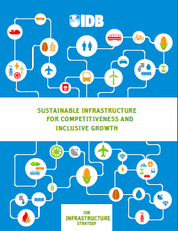 On March 19, 2014, the Institute participated in a roundtable hosted by the Inter-American Development Bank (IDB) on the topic of “Sustainable Infrastructure.” The IDB is the leading source of development financing for Latin America and the Caribbean. Besides loans, the IDB also provides grants and technical assistance and conducts research. In 2013, the IDB released a new infrastructure strategy [English | Español]. IDB representatives opened the event by highlighting the following key questions: How do we determine whether infrastructure projects are increasing the welfare of society? Are they are providing a decent service? Are they within the boundaries of the environment / biome? Three Pillars of Sustainability Three pillars of sustainability were discussed: Physical, Social, and Environmental. On the topic of environmental sustainability, the buzzword was “upstreaming,” which means that the IDB aims to engage governments in much earlier stages of infrastructure project planning in order to introduce sustainability concepts at the policy-making and project development stage (upstream), rather than later at the financing stage (downstream). After the opening presentation, panelists from academia and civil society organizations shared their expertise and perspectives on these issues. In particular, speakers emphasized the importance of engaging ministries of finance and planning and highlighting the economic benefits of sustainability (e.g., positive impact on GDB growth, reduction in project delays and costs). Infrastructure Sustainability Evaluation Tools Speakers from Harvard University and the US Department of Transportation and highlighted several web based tools for evaluating the sustainability of infrastructure projects.
 In a detailed study of 245 dams in 65 countries, researchers with the University of Oxford found that cost overruns averaged 96% and schedule slippage averaged 44%. The study found overwhelming evidence that energy planners systematically underestimate the actual costs and implementation schedules of large hydropower dams. The larger the dam, the longer the implementation schedule and the higher the cost overrun. As a result, even before accounting for negative impacts on human society and environment, and without including the effects of inflation and debt servicing, the actual construction costs of large dams are too high to yield a positive return; including these items, costs and cost overruns are much higher. Since large dams take inordinately long periods of time to build, they are ineffective in resolving urgent energy crisis. Applying this forecasting analysis to large dam projects in the planning and construction stages, such as Brazil's Belo Monte, the authors warn that such projects are likely to face large cost and schedule overruns that seriously undermine their economic viability. The study was published in the March 2014 issue of Energy Policy. |
Categories
All
Archives
January 2025
Blogroll
|
|
© 2013 - 2025 InterAmerican Clean Energy Institute, a project of Earth Ways Foundation Inc, a 501(c)3 nonprofit organization.
|
Web Hosting by iPage
|
 RSS Feed
RSS Feed